The Netflix adaptation Avatar: The Last Airbender has landed on the catalog. For the occasion, we have compiled a list of the 10 main differences with the original cartoon.
It’s a huge project that Netflix has tackled: the adaptation of an iconic cartoon, jealously watched by countless fans lulled by nostalgia. The adventures of Aang, a young Avatar who must restore balance in the world, have finally been broadcast in a live-action version.
And faced with the enormous love from the fan community, we had to find ways to distinguish ourselves from the original work, even if it meant making changes to the story. The goal: to find your own identity while sticking to the universe that transported many spectators to the era of the cartoon.
The modifications are numerous, adaptation requires, but there are 10 which stand out more.
Warning: Avatar: The Last Airbender spoilers ahead!
1 – The importance of water control
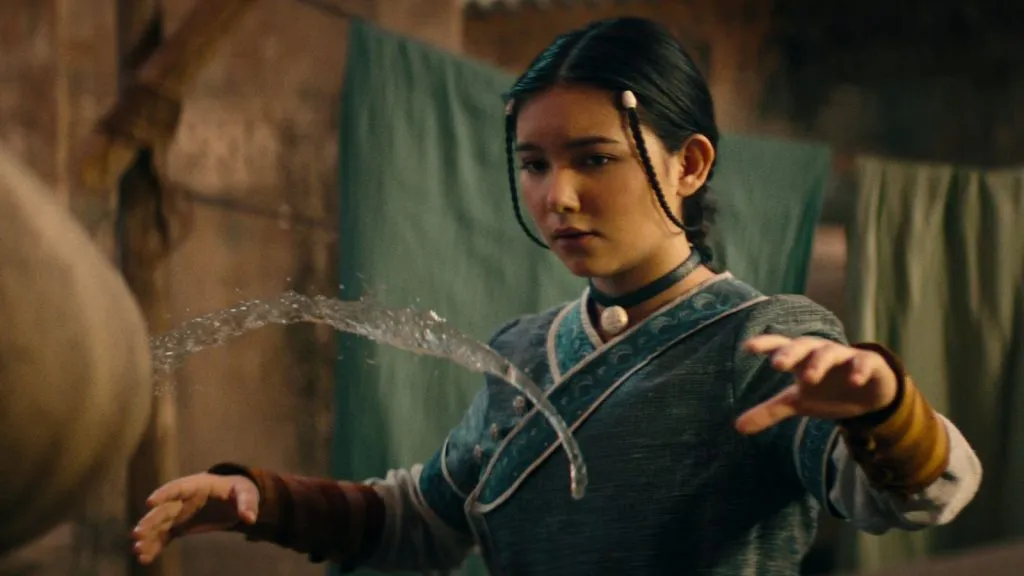
Water control is one of the key skills of the four nations. Indeed, what’s better than water to keep fire at bay? In the live-action series, fans follow Katara as she learns to master her budding skills – although the scenes are rather rare.
In the cartoon, the moment where Katara teaches Aang how to waterbend is a pivotal moment in their relationship. The teaching marks a turning point in Aang’s quest, who must take on his role as Avatar.
The Netflix series preferred to take its time: Aang is content to watch the young girl as she trains, and it will be necessary to wait until the last episode for Katara to be recognized as a water master. Here she is ready to teach… but not in this season!
2 – Bumi’s games
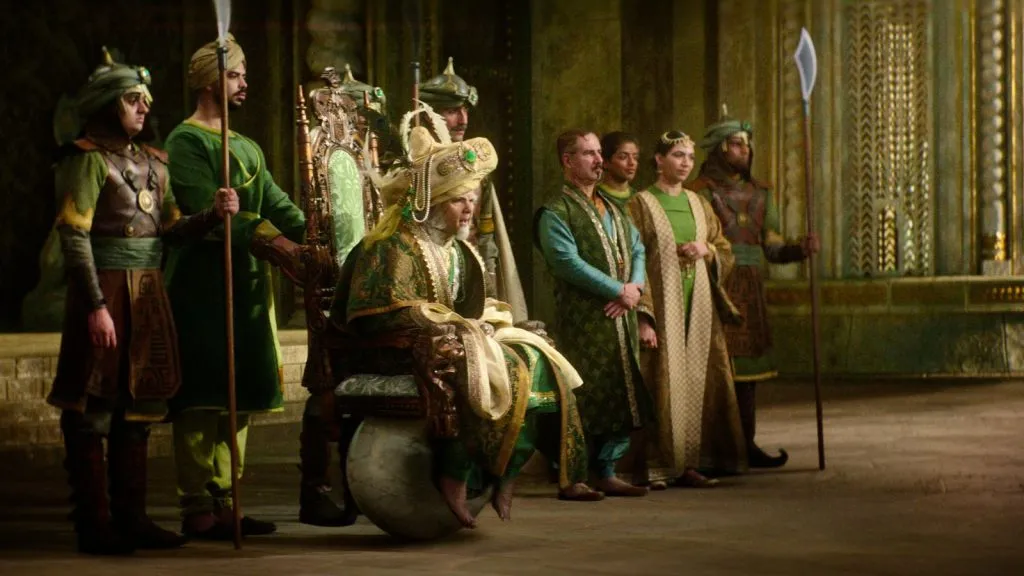
Another of the major changes in Avatar: The Last Airbender concerns the games that Bumi imposes on Aang. In both the cartoon and the live-action version, the ruler of Omashu, the largest city in the Earth Kingdom, uses a series of tests to determine if Aang really has what it takes to be the Avatar.. But the character appears as slightly more sinister in the original work.
In 2005, Bumi used his trio of games as a form of blackmail, tricking Aang into participating by threatening Sokka and Katara, who had been taken hostage. In the live-action version, the brother and sister are not even aware of what is being asked of Aang, until they almost stumble upon the young Avatar and the king during the last game.
3 – Jet and Omashu
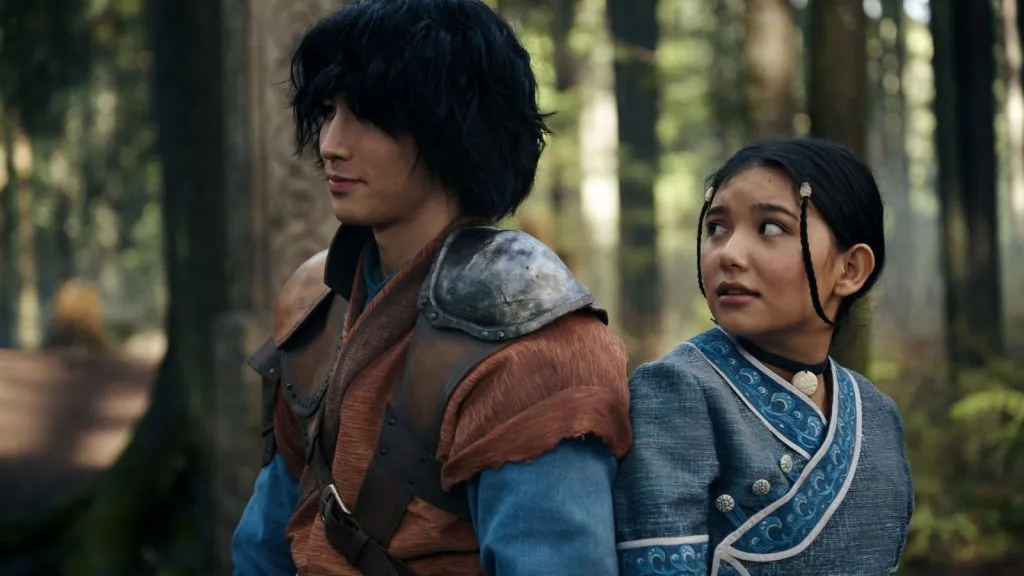
For Netflix viewers, Jet was probably a surprising addition to the cast – especially because he seems to come from a completely different region of the Earth Kingdom. In episode 3, Aang, Sokka and Katara meet Jet in Omashu, while he is fighting with his companions in the forest on the edge of the city. In the original story, Jet comes from Ba Sing Se, a territory that hasn’t quite been featured in the Netflix version yet. Unfortunately, Jet’s time on screen is fleeting, lasting only one episode.
4 – The massacre of the Air Nomads
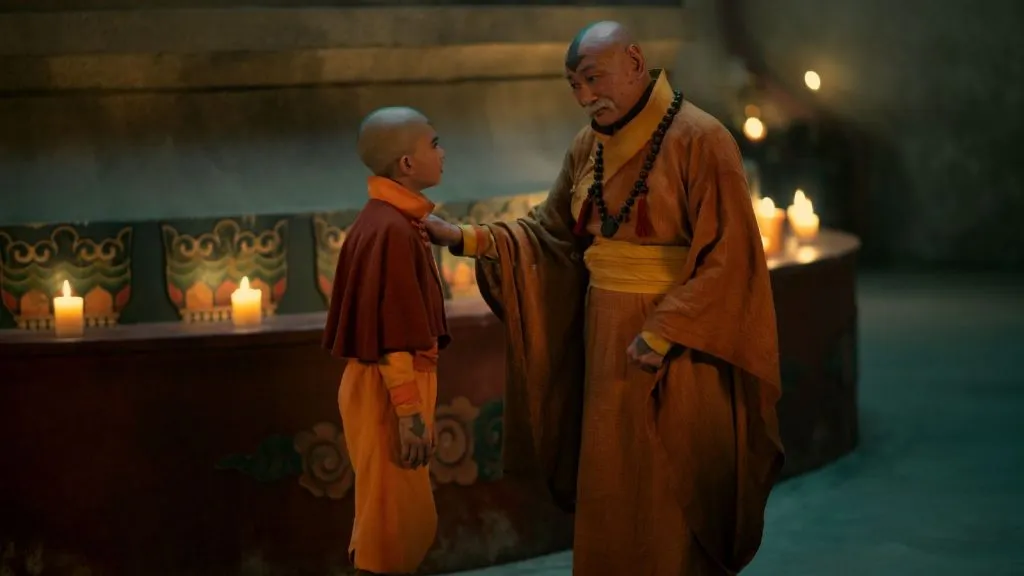
Episode 1 is not the easiest time for Aang, whether in the original version or in live action. Because the boy very quickly learns that the Air Nomads of which he is a part were exterminated by the Fire Nation.
But if in the cartoon the massacre is never really shown, the same is not true for the live-action series. The attack, launched by Fire Lord Sozin, is particularly important in the lore of Avatar: The Last Airbender. And it’s shown from start to finish in the Netflix adaptation.
It was a choice on the part of the showrunner, wanting to distinguish himself from the original work by offering an impactful scene from the start. It was for Entertainment Weekly that Albert Kim explained his intentions: “The original cartoon is intended for children. But I felt it was important that we see the event that sparks the Avatar story. The most famous sentence is: “Everything changed when the Fire Nation wanted to take power.»I wanted to see it with my own eyes.”
5 – Access to the world of spirits
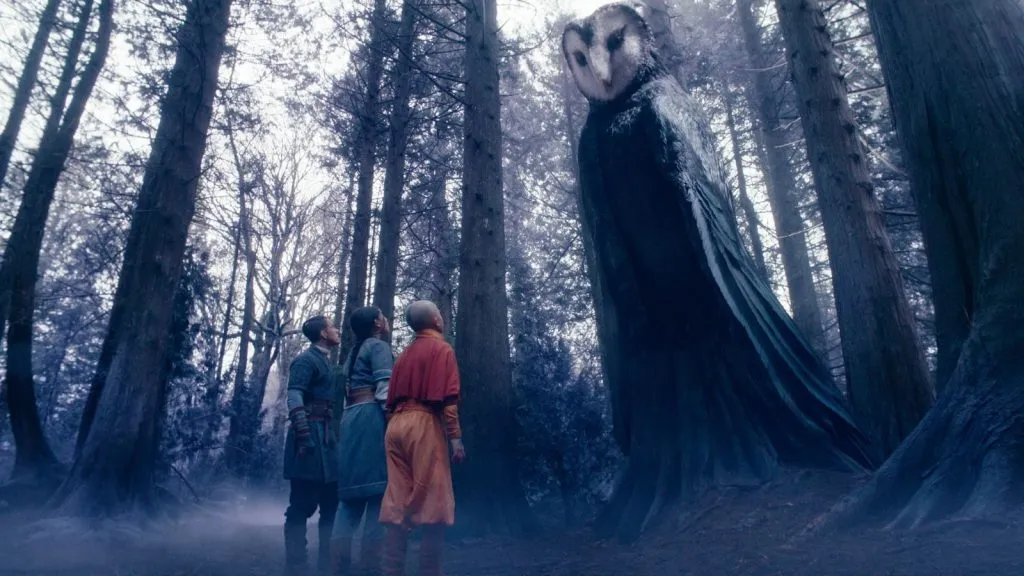
In episode 5, Aang is able to fully enter the spirit world, as he arrives in a forest charged with spiritual energy. In the cartoon too, Aang hardly encounters any difficulty thanks to his status as Avatar, which makes him a particularly alert being. Indeed, to enter, people must meditate, thus leaving their body defenseless.
In the live-action version, Aang manages to drag Sokka and Katara into his journey, simply because they were in the same place. The brother and sister are not even aware that they have crossed the border until Aang tells them.
6 – Le tunnel secret
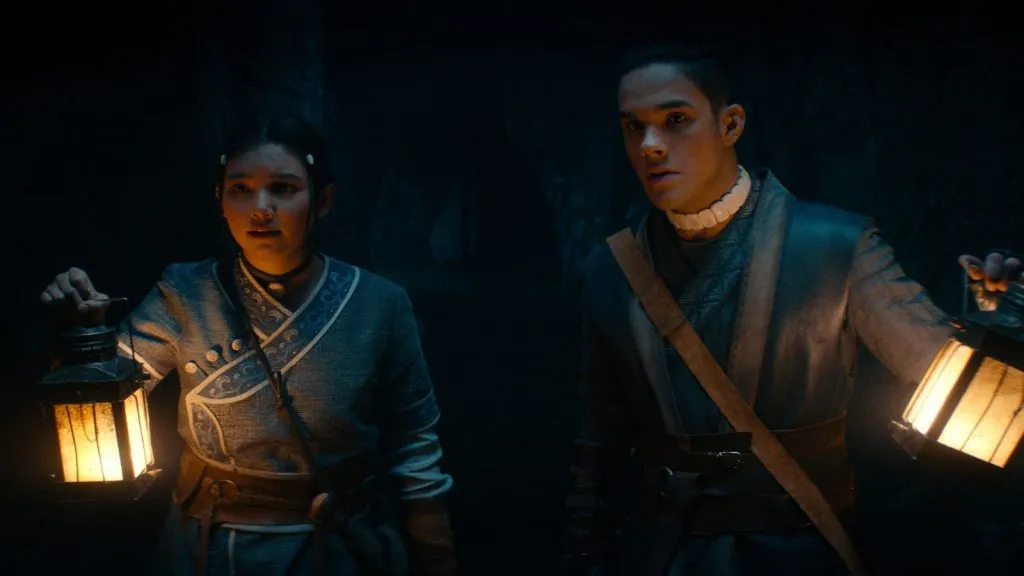
A detail that may annoy fans of the cartoon Avatar: The Last Airbender is the secret tunnel seen in episode 3. While Aang is busy managing the whims of King Bumi, Katara and Sokka try to cross the mountain pass through a secret tunnel. There, they encounter a group of musicians before venturing further to find a fearsome creature that seems to respond to strong feelings like love – because “love shines in the dark” .
In the animated version, the story is slightly different. The tunnel is known as the Lovers’ Cave, and Aang also goes there, accompanying the brother and sister in their discovery. There are not only many statues, but also a good handful of creatures, rather than just one.
7 – Character additions and deletions

When talking about an adaptation, you have to expect that fans will want to see certain characters appear. Avatar: The Last Airbender took liberties to better fit its format, slightly remodulating the scenario. This explains why certain heroes or antagonists appear at different times from the original.
This is the case of Princess Azula, who is not supposed to be present as much. The Netflix series opts to show her as a demanding reflection of Prince Zuko, involving her in all eight episodes of Avatar: The Last Airbender.
The same goes for the engineer and his son in Omusha, who arrive earlier in the Netflix series than in the cartoon.
8 – The relationship between Sokka and Katara
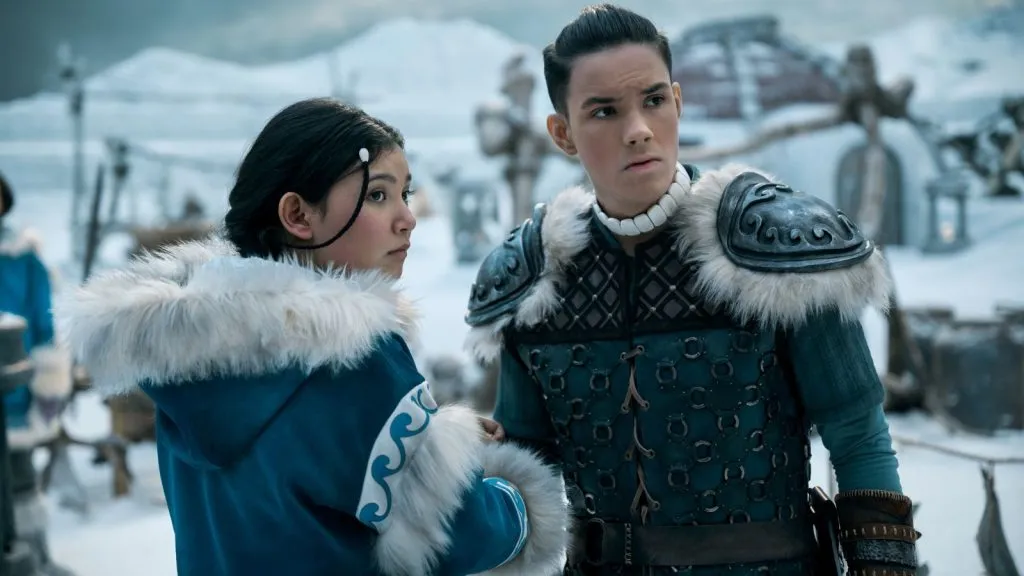
One of the changes that was criticized even before the release of the live-action adaptation of Avatar: The Last Airbender concerns the relationship between Katara and her big brother Sokka. This called into question the suppression of the sexist behavior of the young man, raised in the Southern Water Tribe.
If the teenager presents preconceptions in the Netflix series, we must recognize that they are not as impactful as in the cartoon. The decision is double-edged: Sokka is more easily appreciated from the start of the live-action, yes. But his evolution, as he meets women who will make him change his mind about women, suddenly seems more superficial.
9 – Missing side quests
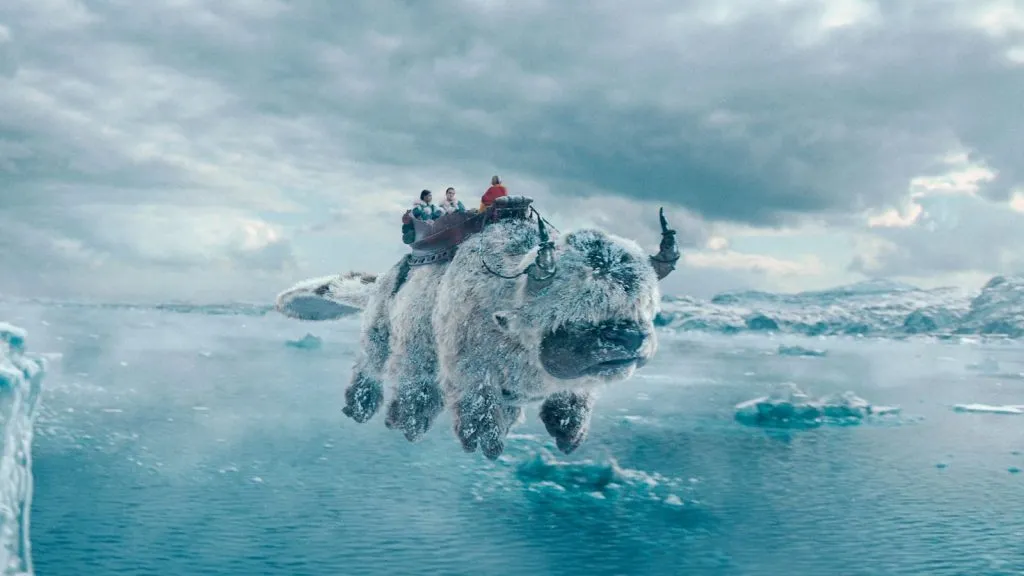
The format chosen by the showrunners of Avatar: The Last Airbender, eight 50-minute episodes, also had its impact on the pace of the story. The Netflix series is therefore more linear, taking its time while pursuing an almost single goal: that of stopping the Fire Nation. The cartoon showed the trio embarking on a new adventure each episode while facing the threat of the Fire Nation.
10 – Sozin’s Comet

The most confusing change remains the almost total absence of Comet Sozin in the story. If she appears at the start of the live-action to explain the power of the Fire masters who attack the Air Nomads, we never hear anything about her afterwards. We will have to wait for the last episode, which will use it as a cliffhanger for a sequel.
However, the star is particularly important for the scenario: because it is precisely its arrival that creates urgency in Aang’s quest. The boy must become an accomplished Avatar before the comet gives too much power to the Fire Nation, who intends to take advantage of it to deal a decisive blow to other peoples.
One of the explanations lies in the relationship to time which will change from one series to another: if the cartoon takes place over the course of a year, the live-action series must deal with an important detail, that of aging. young actors. The production time imposes its constraints, we will therefore have to expect a more stretched story over time for the series.
Avatar: The Last Airbender has been available on Netflix since February 22, 2024.




Leave a Reply